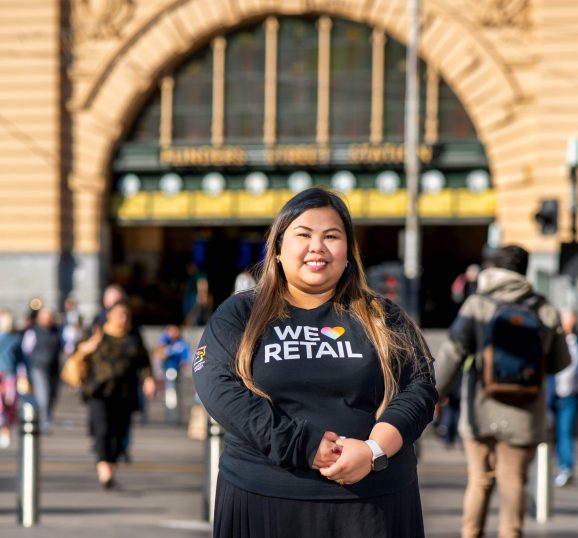Hospitality in a Post-COVID-19 World
written by Heidi Pialago
12/03/21Do you ever feel like time can go by at different speeds? While on vacation, an entire week may go by in a few hours, whereas at work, a bad day can sometimes feel interminable. This is often described as the elasticity of time which is strictly a matter of perception: your brain either produces stimulants which cause an overestimation of the flow of time, or depressants, which have the opposite effect. However, in the last few months, it seems like this feeling took a literal turn.
COVID-19 outbreak warped the concept of time, both subconsciously and literally. Early 2020 already feels like a decade ago, not only because we perceive it that way, but also because the world underwent changes that normally unfold over multiple years, not months. This swift and global shift took everyone aback and forced every company to enact concrete adaptation measures. In the process, the deck has been reshuffled and redistributed, which leaves room for opportunities in many industries. Hospitality is no exception.
In this article we will try to paint a picture of what the hospitality market will look like in the years to come.
Back to the drawing board
The last few months have made a clean sweep of decades of food and beverage strategies.
As of today, almost all of the experience acquired during these years has become nothing more than false securities. While it can be frustrating to dismiss such hard-earned and valuable insights, it can also be invigorating to start anew. By elaborating the right strategy, you can reopen your establishment on rock-solid ground and differentiate yourself from the competition. While doing so, it is paramount to stay in the right mindset:
- Stay as open to new/disruptive ideas as possible.
- Remain optimistic and confident that you are going to make it through this crisis.
Once you manage to achieve this kind of agile thinking and glass-half-full mentality, akin to the start-up mindset, you can start working your way to the top.
The next step is to start building this strategy. Ever since the pandemic hit the reset button in the industry, a wide array of matters has been climbing up the restaurant operator’s to-do list. Between cleaning protocols, marketing solutions and new technologies it can be hard to evaluate which qualifies as the most pressing concern.
Here are a few suggestions on what to prioritise for the continued and long-term success of your business.
Invest in your digital future
Digitalization has been a recurring issue in the hospitality industry for a few years now. In the past, operators have chosen to delegate this key strategic concern to other agencies, such as Uber Eats, Menu Log and Review platforms, which in turn took control of the online hospitality world. Most establishments have, since then, recognized the value of having a far-reaching digital presence, notably in order to boost their direct bookings.
We list a few tips below on how to improve on that particular issue:
- Have a regular digital media schedule: Dedicate some time every day to posting content online. Use a social media scheduler to improve efficiency and save time.
- Look after your customers and let their opinion shine online: Get listed on review websites and social media to improve your online reputation.
- Diversify your online distribution channels: You’ll be where your customers are, and this offers an opportunity to engage with existing customers and attract potential customers at the same time.
- Invest in your own website: Far too often, establishments neglect the importance of a visually pleasing and efficient website. Aim to have a well-organized platform with the right tools and pictures that ultimately convinces your users to patronise at your business. The investment put into enhancing your online reputation is hardly ever wasted.
Rethink your marketing strategy
In the last few years, outbound marketing (looking for clients outside of your current data base) has seldom been a priority. Especially online, where the competition is fierce, marketing can feel like throwing pebbles at a tank: a waste of time, energy and money. However, COVID-19 has restricted and taken away the desire of many people to travel. In order to refill this clientele, hoteliers need to go back to basics and seek to make people want to travel again. This is no small task in today’s world. But with the right message, directed to the right people, hotels can start rebuilding guests’ trust and the ascending path. Here are some of the ways you can prepare your new hotel marketing strategy:
- Work on your own digital marketing campaigns
- Find the right message for your audience
- Establish synergies with other businesses
- Take advantage of precinct or locational promotion initiatives
Make bold moves towards innovation
In order to stand out from the competition, you need to prove your purpose, and demonstrate how you differentiate for the better. Aside from outpacing competition on the marketing and digital fields, you need to also distinguish your business with innovation and unique, engaging offerings.
Innovation is often a gamble, as new solutions are not widespread, and it is impossible to say with full assurance that the idea will pay off in the long run. However, since the COVID-19 outbreak triggered the great hospitality reset, now is the best time to take risks. Indeed, it is a level playing field where nobody knows for sure what shape the future will take. One or many particularly disruptive solutions could be the difference you need to fit into this new environment. Let us take a look at some of the latest trends and innovative systems in the post COVID-19 hospitality market:
- Adopt touchless technology: Ever since 2020, contactless technology has experienced a big boom. This kind of innovation can be a great selling point!
- Reduced menus: Menu variety plays a substantial role in every dining experience. A huge menu is the restaurant’s attempt to make something for everyone, rather than doing a few things really well. The latest trends in restaurants show that restaurants are on board and understand the difficulties that long menus create. Craft a short menu or split your menus between meal periods.
- Health-conscious: Last year the restaurant industry saw their customers swap plates for bowls in the hope of a healthier meal. From Buddha Bowls to Power Bowls, they were a hot topic. While people aren’t stuck on bowls anymore, they still put a heavy focus on health.Younger generations are willing to pay higher prices for healthy meals specifically tied to buzzwords such as GMO-free, all-natural, or organic.Consider marking your menu items that are additive-free or made with only all-natural ingredients.
- The continued rise of vegan cuisine: With people eating less meat year-on-year, vegan cuisine is no longer an option limited to those with full vegan diets, and as variety increases it’s become more appealing to people with flexitarian, vegetarian and even omnivorous diets! Increasing demand will be met in restaurants across the industry with new items on their menus, and an attempt to offer vegan and plant-based dishes as a staple and not as a limited option for those with alternative diets.
- Pop-up restaurants: It seems like pop-up restaurants and food trucks trade-off as a significant trend every few years. Pop-up restaurants offer a fun experience which many diners can’t get anywhere else. Of course, the success of a pop up is only a flash in the pan. Use a pop up to feed business back to your stationary restaurant.
- Ghost kitchens: Ghost kitchens are reliant upon another hot trend that will continue into 2021, food delivery. A ghost kitchen is a restaurant that only operates out of a kitchen with no dining space. For restaurant owners, this structure means much lower overhead costs, no service staff, using ghost kitchen POS systems and delivery-only ordering. The main thing they should invest in is building a strong online presence. The ghost kitchen definition is evolving to include restaurants that have a small pick-up area for guests to grab their food themselves. Restaurants using ghost kitchens may directly provide delivery or use delivery services. These restaurant business trends are changing the way the industry works. There are now restaurants that have to approach customer service, and brand management, without ever actually meeting the customer.
- Delivery options: Delivery has increased again and again over the last two years. What is changing in 2021 restaurant delivery trends is how small businesses look at delivery options. Pizza companies have long managed their delivery services independently. However, those new to the game mostly chose to let a third-party delivery company handle their orders. Small restaurants quickly learned that the terms of third-party delivery services were unreasonable. Uber Eats can charge as high as 30% to the restaurant on every order. About 84% or restaurant owners said that the fees ate into their profits weren’t worth the increase in business.Other issues that are causing restaurants to leave third-party delivery services include:
- Customer service complaints on drivers and delivery personnel
- Lack of urgency in delivery as the driver has limited accountability to the restaurant
- The delivery service taking the recognition leading to your brand losing its value and reputation
Adding a delivery service to your restaurant isn’t that difficult. It’s possible to start delivering quickly, with or without a third-party service. Carefully decide whether you need the benefits of a third-party delivery service of if you can make a delivery system work independently.
- Stay on the lookout for new trends: As things are evolving very fast amidst the changing times, it is important to keep your ear to the ground for upcoming technologies.
Taking part in the hottest restaurant trends can help get more people through the door, but then you and your staff need to make guests want to come back. Of course, quality of service and food are necessary to build long-lasting customer loyalty. To balance high-quality, consistency, and changing trends, you need software that can give you an edge, and help you keep up with the top restaurant trends.
We have suggested a few pathways operators can take to start thriving in this brand-new world. In the long-run, restaurateurs will need to adapt to fit to the new status-quo and forgo any hope of going back to “normal”. The expression of “new normal” is being thrown around a lot lately, echoing that feeling. However, the new normal in the hotel industry is not what we are currently experiencing: it is what hoteliers choose to do with what they are being given. Aim to be part of this new normal by thinking like a visionary, and making bold moves!
As Andy Grove of Intel once said, “bad companies are destroyed by a crisis, good companies survive the crisis; but great companies are defined by a crisis”.

Contact a retail specialist
Send us a message and one of our friendly agents will get back to you.














